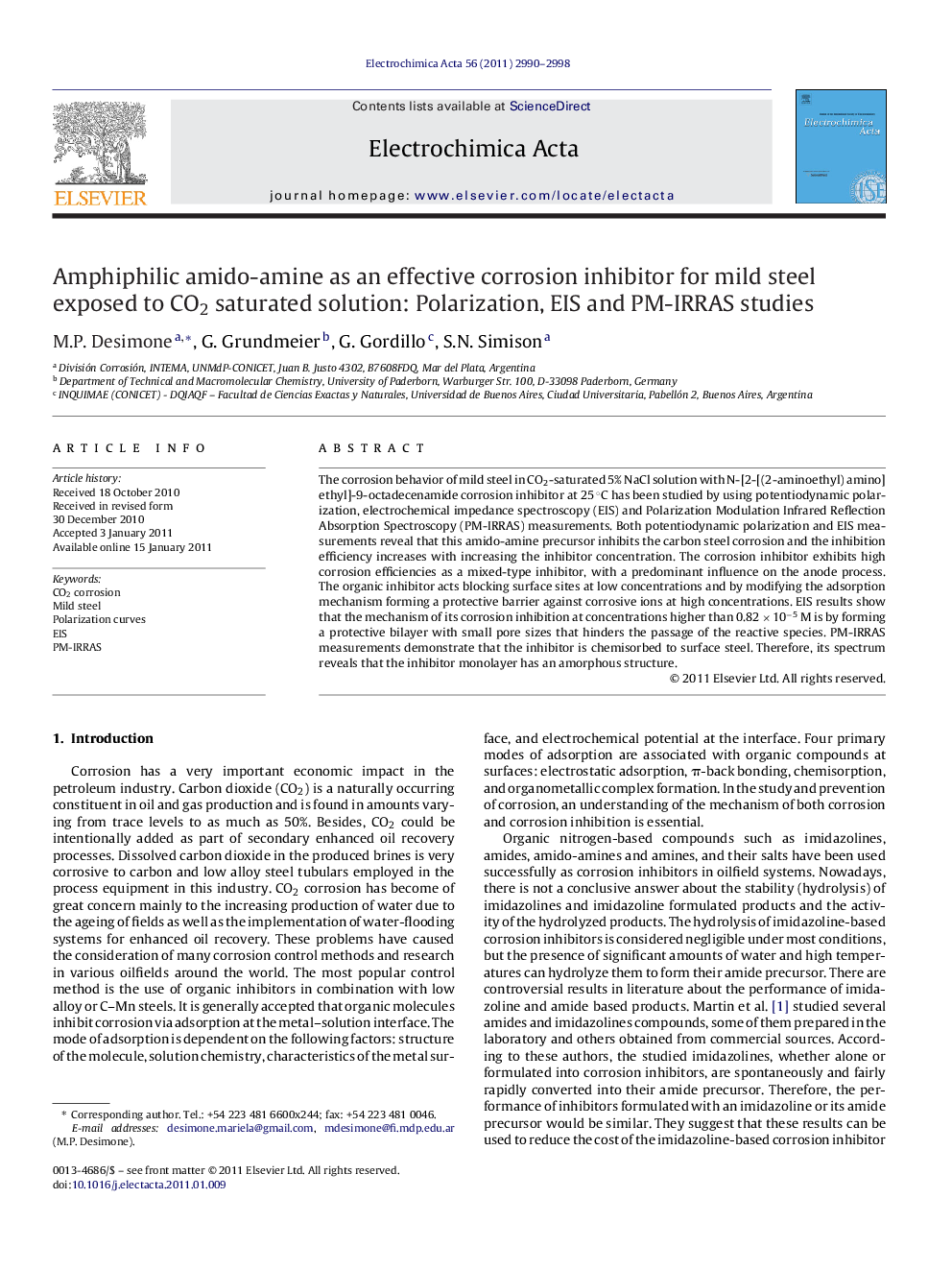| Article ID | Journal | Published Year | Pages | File Type |
|---|---|---|---|---|
| 190204 | Electrochimica Acta | 2011 | 9 Pages |
The corrosion behavior of mild steel in CO2-saturated 5% NaCl solution with N-[2-[(2-aminoethyl) amino] ethyl]-9-octadecenamide corrosion inhibitor at 25 °C has been studied by using potentiodynamic polarization, electrochemical impedance spectroscopy (EIS) and Polarization Modulation Infrared Reflection Absorption Spectroscopy (PM-IRRAS) measurements. Both potentiodynamic polarization and EIS measurements reveal that this amido-amine precursor inhibits the carbon steel corrosion and the inhibition efficiency increases with increasing the inhibitor concentration. The corrosion inhibitor exhibits high corrosion efficiencies as a mixed-type inhibitor, with a predominant influence on the anode process. The organic inhibitor acts blocking surface sites at low concentrations and by modifying the adsorption mechanism forming a protective barrier against corrosive ions at high concentrations. EIS results show that the mechanism of its corrosion inhibition at concentrations higher than 0.82 × 10−5 M is by forming a protective bilayer with small pore sizes that hinders the passage of the reactive species. PM-IRRAS measurements demonstrate that the inhibitor is chemisorbed to surface steel. Therefore, its spectrum reveals that the inhibitor monolayer has an amorphous structure.
